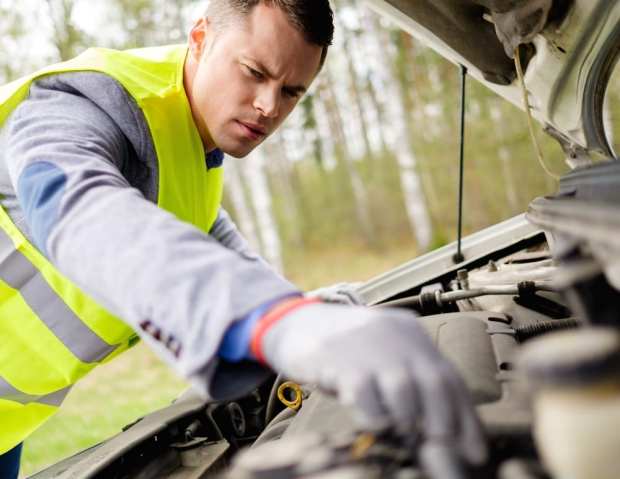Digital Disruption Meets Automotive Repairs

It’s a cliché (but a true one) to say that the automotive world, and the culture attached to it, is undergoing a massive, historic change — thanks to digital and mobile technology, and a shift in consumer preferences. Cars and trucks are becoming rolling centers of commerce and payments. Ridesharing and other programs are changing the concept of what it means to be a driver, rider and user of transportation in general.
Yet, one thing has yet to change: the often-frustrating, friction-filled, expensive experience of vehicle repair. That’s not something that can be remedied by the gig economy, according to Ed Petersen, CEO and founder of Wrench, in a new PYMNTS interview.
Wrench functions as a digital, mobile source of mechanics who come to consumers, instead of having the consumers come to auto repair shops. The company uses artificial intelligence (AI) and other digital technology to provide an on-scene diagnosis of problems and needed repairs, as well as standard pricing and quotes. The company also offers towing and roadside assistance, and repair work for fleet vehicles.
The story Petersen told PYMNTS is one of using modern technology and eCommerce tactics to match highly trained professionals — in this case, ASE-certified mechanics — with vehicle owners in need of efficient repairs. This involves doing so in a way that takes the anxiety out of waiting for and receiving a quote, and could mean no time spent in an auto repair shop (depending, of course, on the nature of the repair).
“There is a ton of really cool stuff going on in the automotive industry, but nothing has really changed with repairs from a consumer’s perspective,” he said, describing the motivation behind Wrench. “It was ripe for disruption. It’s a very fragmented market with low customer satisfaction rates.”
Employed Mechanics
Wrench employs the mechanics it sends out. One would think that, as the gig economy and gig marketplaces continue to grow, a company might just be in the business of operating a digital place where consumers are matched with mechanics. However, fixing a vehicle — especially in this day and age — is much more complicated than most gig work.
“Fixing a car is really hard,” Petersen said. “Mechanics go to school for it, and invest a lot of money in tools.” That is why the focus of Wrench is not to facilitate gig work, but, in his words, “bring a very high quality service” to consumers to solve their problems.
Make no mistake, the Uber effect is in play even when it comes to those mechanics being sent out via Wrench to roadsides, parking lots or wherever else a vehicle needs repair. Consumers expect to hit a button and have someone show up to solve a particular problem, even if it’s a flat tire.
Yet, vehicle repair involves much more than ridesharing. Diagnostic codes must be normalized, for instance, and the technology must be able — via AI and learning — to figure out what the real problem is, even if described differently by various people. Imagine, as Petersen noted, how many different ways people in the same car might describe the same noise. Not only that, but owners don’t tend to be experts on their own vehicles. How many even know what types of engines they have under their hoods?
Growth Path
So far, Wrench is in about 20 U.S. markets, but is looking to expand more into domestic and international markets. “If you live in a place with a pro sports team, we will probably eventually be in your market,” he told PYMNTS. The company generally appeals to young women, but all types of customers are using the platform. Wrench recently raised $20 million in new funding, and Petersen said the company not only plans to expand geographically, but via additional in-market services.
Wrench is playing hard to expand into the fleet business as well, whether that means, according to Petersen, “a local plumber with 20 vans or a huge delivery company.” The appeal can be significant: a two-hour or so roadside repair versus a day or more in an automotive repair shop, he noted.
Wrench still has a ways to go, and the firmly entrenched automotive repair industry will not be easy to disrupt. However, so far, the efforts stand as yet another example of how digital and mobile technology are changing this massive part of the economy.
